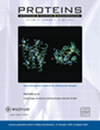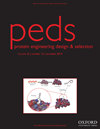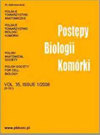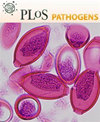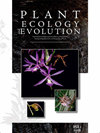JOURNAL OF MICROBIOLOGICAL METHODS
SCI/SCIE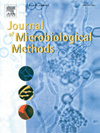
- 雜志名稱:微生物方法雜志
- 簡稱:J MICROBIOL METH
- 期刊ISSN:0167-7012
- 大類研究方向:生物
- 影響因子:1.803
- 數(shù)據(jù)庫類型:SCI/SCIE
- 是否OA:No
- 出版地:NETHERLANDS
- 年文章數(shù):219
- 小類研究方向:生物-生化研究方法
- 審稿速度:約3.0個月
- 平均錄用比例:約62.5%
官方網(wǎng)站:http://www.elsevier.com/wps/find/journaldescription.cws_home/506034/description#description
投稿網(wǎng)址:http://ees.elsevier.com/mimet/
JOURNAL OF MICROBIOLOGICAL METHODS
英文簡介The Journal of Microbiological Methods publishes scholarly and original articles, notes and review articles. These articles must include novel and/or state-of-the-art methods, or significant improvements to existing methods. Novel and innovative applications of current methods that are validated and useful will also be published. JMM strives for scholarship, innovation and excellence. This demands scientific rigour, the best available methods and technologies, correctly replicated experiments/tests, the inclusion of proper controls, calibrations, and the correct statistical analysis. The presentation of the data must support the interpretation of the method/approach.All aspects of microbiology are covered, except virology. These include agricultural microbiology, applied and environmental microbiology, bioassays, bioinformatics, biotechnology, biochemical microbiology, clinical microbiology, diagnostics, food monitoring and quality control microbiology, microbial genetics and genomics, geomicrobiology, microbiome methods regardless of habitat, high through-put sequencing methods and analysis, microbial pathogenesis and host responses, metabolomics, metagenomics, metaproteomics, microbial ecology and diversity, microbial physiology, microbial ultra-structure, microscopic and imaging methods, molecular microbiology, mycology, novel mathematical microbiology and modelling, parasitology, plant-microbe interactions, protein markers/profiles, proteomics, pyrosequencing, public health microbiology, radioisotopes applied to microbiology, robotics applied to microbiological methods,rumen microbiology, microbiological methods for space missions and extreme environments, sampling methods and samplers, soil and sediment microbiology, transcriptomics, veterinary microbiology, sero-diagnostics and typing/identification.The editors, editorial board members and scholarly reviewers are active scientists with an immense amount of collective experience that is used during the review and revision stages of articles. We encourage the submission of proposals for scholarly reviews and specials issues on emerging microbiological methods that are central to advancing microbiological knowledge. We look forward to receiving your proposals and articles.
JOURNAL OF MICROBIOLOGICAL METHODS
中文簡介微生物方法雜志發(fā)表學(xué)術(shù)和原創(chuàng)文章,注釋和評論文章。這些文章必須包括新穎的和/或最先進的方法,或?qū)ΜF(xiàn)有方法的重大改進。還將出版目前已得到驗證和有用的方法的新穎和創(chuàng)新應(yīng)用。JMM追求學(xué)術(shù)、創(chuàng)新和卓越。這需要科學(xué)的嚴(yán)密性、最好的可用方法和技術(shù)、正確的重復(fù)實驗/試驗、包括適當(dāng)?shù)目刂啤⑿?zhǔn)和正確的統(tǒng)計分析。數(shù)據(jù)的表示必須支持方法/方法的解釋。除病毒學(xué)外,涵蓋微生物學(xué)的所有方面。其中包括農(nóng)業(yè)微生物學(xué)、應(yīng)用微生物學(xué)和環(huán)境微生物學(xué)、生物測定、生物信息學(xué)、生物技術(shù)、生物化學(xué)微生物學(xué)、臨床微生物學(xué)、診斷學(xué)、食品監(jiān)測和質(zhì)量控制微生物學(xué)、微生物遺傳學(xué)和基因組學(xué)、地質(zhì)微生物學(xué)、不分生境的微生物組方法、高通量測序方法和分析、微生物發(fā)病機理和宿主反應(yīng)、代謝組學(xué)、宏基因組學(xué)、宏蛋白質(zhì)組學(xué)、微生物生態(tài)學(xué)和多樣性、微生物生理學(xué)、微生物超結(jié)構(gòu)、顯微和成像方法、分子微生物學(xué)、真菌學(xué)、新型數(shù)學(xué)微生物學(xué)和建模、寄生蟲學(xué)、植物微生物相互作用、蛋白質(zhì)標(biāo)記/譜、蛋白質(zhì)組學(xué)、焦測序、公共衛(wèi)生微生物學(xué)、微生物學(xué)應(yīng)用的放射性同位素、微生物學(xué)方法的機器人、瘤胃微生物學(xué)、太空任務(wù)和極端環(huán)境的微生物學(xué)方法、采樣方法和采樣器,土壤和沉積物微生物學(xué)、轉(zhuǎn)錄組學(xué)、獸醫(yī)微生物學(xué)、血清診斷和分型/鑒定。編輯、編輯委員會成員和學(xué)術(shù)評論家都是活躍的科學(xué)家,在文章的評審和修改階段,他們擁有大量的集體經(jīng)驗。我們鼓勵就促進微生物知識發(fā)展的新興微生物方法的學(xué)術(shù)評論和專題問題提交建議。我們期待收到您的建議和文章。
精選同類領(lǐng)域期刊,熱門推薦輕松get~
-
- RECORDS OF THE AUSTRALIAN MUSEUM
- 期刊ISSN:0067-1975
- 大類研究方向:生物
- 影響因子:0.400
- 數(shù)據(jù)庫類型:SCIE
- 咨詢投稿
-
- PROTEINS-STRUCTURE FUNCTION AND BIOINFORMATICS
- 期刊ISSN:0887-3585
- 大類研究方向:生物
- 影響因子:
- 數(shù)據(jù)庫類型:SCI/SCIE
- 咨詢投稿
-
- PROTEIN ENGINEERING DESIGN & SELECTION
- 期刊ISSN:1741-0126
- 大類研究方向:生物
- 影響因子:1.952
- 數(shù)據(jù)庫類型:SCI/SCIE
- 咨詢投稿
-
- POSTEPY BIOLOGII KOMORKI
- 期刊ISSN:0324-833X
- 大類研究方向:生物
- 影響因子:0.106
- 數(shù)據(jù)庫類型:SCIE
- 咨詢投稿
-
- PLoS Pathogens
- 期刊ISSN:1553-7366
- 大類研究方向:生物
- 影響因子:7.464
- 數(shù)據(jù)庫類型:SCI/SCIE
- 咨詢投稿
-
- Plant Ecology and Evolution
- 期刊ISSN:2032-3913
- 大類研究方向:生物
- 影響因子:
- 數(shù)據(jù)庫類型:SCIE
- 咨詢投稿
精選常見問題,答疑解惑輕松get~
- 三篇ssci論文怎么同時投出去
- 中文核心和sci哪個影響力更大
- 中科院一區(qū)和JCR一區(qū)期刊占比區(qū)別
- 發(fā)ssci如何快速找合適的期刊
- 資源保護方面論文投sci指導(dǎo)
- 外貿(mào)行業(yè)論文發(fā)ssci周期長嗎
- 國外的sci投到錄用一般多久
- ssci期刊國內(nèi)認(rèn)可度
- 核能應(yīng)用論文翻譯英文發(fā)sci容易的方法
- 人口老齡化研究論文符合ssci領(lǐng)域嗎
- sci開源和不開源分別是什么意思?有什么影響?
- ssci發(fā)表是高水平學(xué)術(shù)論文嗎
- 生態(tài)修復(fù)主題英文論文會收錄哪些數(shù)據(jù)庫
- 哲學(xué)專業(yè)論文發(fā)英文期刊
- 中科院sci四個區(qū)的劃分
- ssci期刊和sci期刊的區(qū)別
- ESCI和SCIE要分清
- ssci送審論文多久出結(jié)果
- ssci論文二作有用嗎
- 水土保持類英文期刊好選嗎
- ssci期刊論文一定會檢索嗎
 投稿咨詢
投稿咨詢


